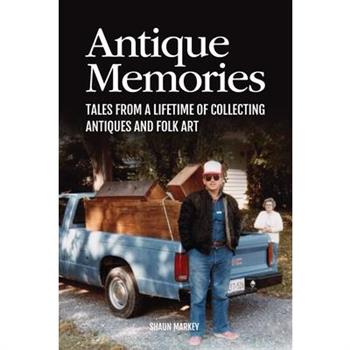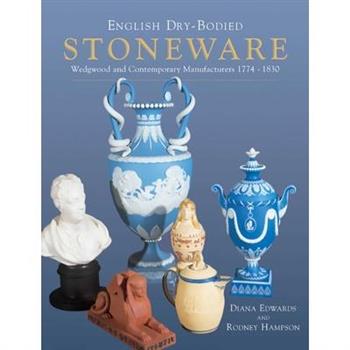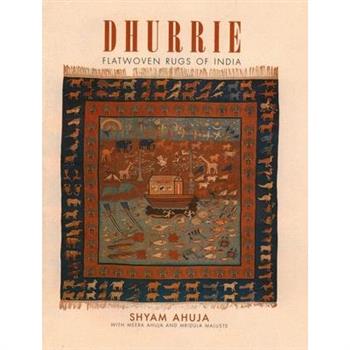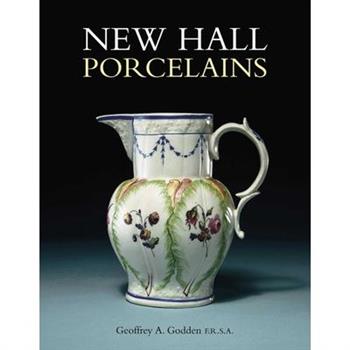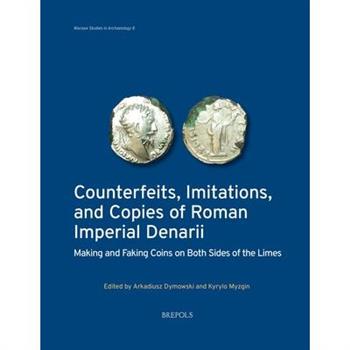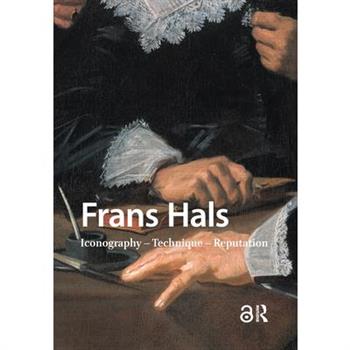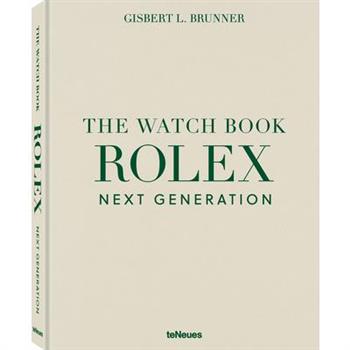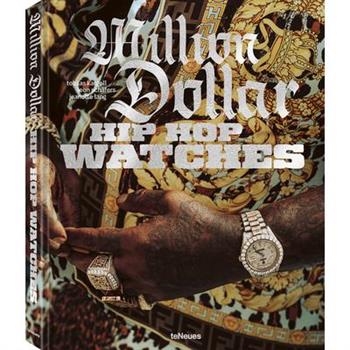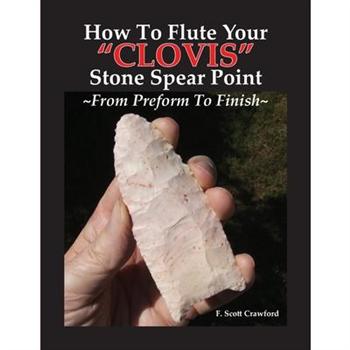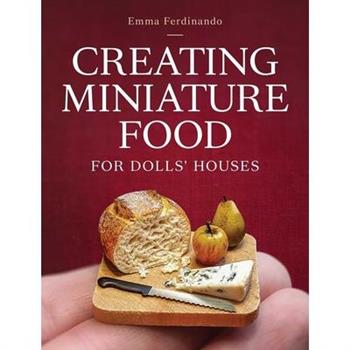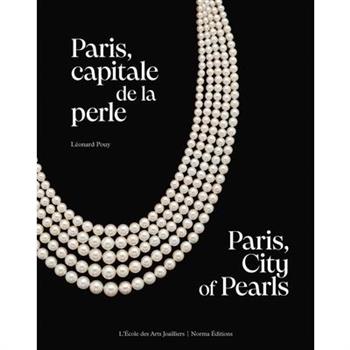Book Review Magazine - 04 (Spring 2025)
A Glimpse of the Thoughts
Discover this collection of fifty raw and evocative poems that transcend time and space, each of which will resonate deep within your heart and soul. "A Glimpse of The Thoughts" by John E. Agbor, takes a deep dive into soul-searching poetic themes such as Odes, Love's travails, Musings, Mortality, Spirituality, Existentiality, Trials and Tribulations, etc. Elevate your reading experience with this powerful collection, where impactful messages have been delivered through choice lyrical language that will stay with you long after you turn the last page. Equally satisfying and rewarding as the individual poems, you will find the poet's personal notes after every poem which provide priceless information about the poem: when it was written, the inspiration for the poem, the intended message embodied in the poem, etc. For Poets, lovers of poetic expression, or anyone seeking a deeper connection to their emotions, this book is for you. Make haste to order your copy so you don't miss out on this bridge between traditional and modern poetry, so relevant and so relatable to humankind regardless of racial, spatial, temporal, or cultural differences.
English Dry-Bodied Stoneware
English dry-bodied stoneware was the ultimate ceramic expression of the neoclassical wave which erupted in England and on the Continent in the mid-eighteenth century. Initially basalt commanded the scene, with its imposing black stoneware forms imitating Greek vases. However, it was Wedgwood's invention of the jasper body which was to be the tour de force associated with his name. Wedgwood's jasper vases, purchased by gentry and nobility alike, were soon imitated by a myriad of potters. This book is the first to explore the vast subject of English dry-bodied stoneware with discussions on the antecedents of the eighteenth century neoclassical wares, the red stonewares of the seventeenth century, as well as the other bodies produced by Wedgwood and his contemporaries: caneware, white felspathic stoneware and, of course, the flagship of the Wedgwood name, jasper. The authors have, for the first time, utilised Wedgwood's surviving sales records from 1774-1794 and these have made it possible to allow for more specific dating of body types and forms as they correspond to the Wedgwood Shapes Books. Three hundred and fifty black and white illustrations with seventy-five color plates, many shown here for the first time, provide an invaluable guide to the identification of these wares. Detailed research into the more than sixty other potteries concerned with the production of these handsome, ornamental and useful stonewares, makes this the most comprehensive reference book ever produced on the subject.
Vine Potteries
The Vine Pottery was founded by Lawrence Arthur Birks and Charles Frederick Goodfellow in Stoke-upon-Trent in 1894. Beginning with small scale production of fine bone china tableware, the company fortunes were transformed in 1901 when Edmund G. Reuter was employed as designer. He introduced an ivory porcelain with middle eastern decoration known as 'Persindo Porcelain'. Many new designers were then attracted to the firm resulting in numerous international awards and even royal patronage from Queen Mary. Troubled times in the 1920s after the National Strike and the Wall Street Crash led ultimately to closure in 1934.
Dhurrie--Flatwoven Rugs of India
Largely unappreciated, the traditional flatwoven Indian dhurrie has long been overshadowed by the luxuriant Mughal pile carpets. For the first time the dhurrie is given the prominence it deserves. Transcending social boundaries the dhurrie was used by commoner and royalty alike - at its simplest it was a multi-purpose textile used as floor covering, bedding or packaging. At its most elaborate, however, woven with the finest fibers and enhanced with gold threads, it graced the palaces of royalty. This pioneering work traces the dhurrie back into the mists of prehistoric India with beautifully reproduced photographs of extant examples through the centuries. It pays particular attention to the design and coloring of dhurries from classic stripes to ornate geometrical designs as well as pictorial dhurries. The many stages of dhurrie making are comprehensively covered - from the selection and dying of the yarn to the final processes of weaving, washing and finishing. A particular feature is the coverage of contemporary dhurries as a decorative art form in its own right.
Spode Transfer Printed Ware 1784-1833
Spode Transfer Printed Ware, first published in 1983, has now been extensively enlarged and revised, listing and illustrating every known transfer print issued by the Spode family at their Works in Stoke-on-Trent. More than 100 additional prints have been discovered since 1983. Over 350 further illustrations are included, covering the shapes of the ware found decorated with printed designs, Spode marks found on the ware and the methods of manufacture used in the past and those practised today. Many of the 900 illustrations are in colour, and the informative text discusses early ceramic printing techniques such as bat printing and pluck and dust printing. No other manufacturing potter can match the long history of the Spode Works.
New Hall Porcelains
In this fascinating volume, china-ware expert Geoffrey Godden shows how collectable and decorative New Hall Porcelain is. The factory produced over three thousand patterns which served to enhance a long series of attractive yet very functional forms. They were welcomed for their excellence over a period of over fifty years, from 1782 to 1835. The success of these pleasing Staffordshire porcelains in the marketplace helped to turn the Staffordshire Potteries, then famed only for its earthenwares, into a porcelain-producing center of world importance. The New Hall firm in England were market-leaders in their own time, their shapes and styles widely copied by their several imitators. New Hall Porcelains presents historical facts in a novel, helpful manner, supporting with a broad selection of clear illustrations. Geoffrey Godden is able to illustrate how diverse and attractive these Staffordshire 'Real China' porcelains can be, placing New Hall in its rightful position in the study of British porcelains and their history.
Counterfeits, Imitations, and Copies of Roman Imperial Denarii
Roman Imperial denarii from the first-third centuries AD are, almost without exception, the most common ancient coinage to be found in Central, Northern, and Eastern Europe beyond the Roman limes. Perhaps surprisingly, however, a significant percentage of these coins are in fact counterfeit, comprised largely of denarii subaerati (plated denarii, fourrees) and denarii flati (base metal cast copies). Moreover, these fake coins were not only manufactured by Romans themselves, but also by barbarian peoples in Eastern Europe, far from the Roman limes, in what should be considered a mass-scale phenomena. This volume draws together archaeological, numismatic, and historical research in order to offer a new assessment of the production and use of counterfeit Roman Imperial denarii both within the European provinces of the Roman Empire and in European Barbaricum. Drawing on the results of the research project Barbarian Fakers. Manufacturing and Use of Counterfeit Roman Imperial Denarii in East-Central Europe in Antiquity, from the University of Warsaw, the papers gathered here explore the transfer of ideas, technology, and finished products that led to the transfer of counterfeit coinage across the Empire, and shed light on how, why, and when such coins were created and used.
Journal of Early American Numismatics Vol. 7 (2024) Part 2
The Journal of Early American Numismatics is a semi-annual journal featuring original research on the numismatics of the Americas before 1800.
United States Currency
United States Currency, now available in a revised Ninth edition, tells the story of paper money in the United States from the 1800s to today. Whether you actively collect U.S. currency, or you simply have a few old notes you want to look up, you will find a wealth of valuable information inside. Features market values and illustrations of large-size, small-size, and Fractional Currency notes, arranged by Friedberg numbers, a historical background on each series and denomination, from $1 to $10,000. Covers collector information such as grading, supply and demand, how to specialize, housing your collection, detecting counterfeits, glossary of collector terms, and World War II issues, uncut sheets, error notes, and much more.Ninth Edition Highlights: More than xxx color images New Foreword by Patrick Perez, Editor of CDN Monthly Greysheet Greysheet-based pricing and GSID numbers that identify and link a coin across the entire family of Whitman Brands products, such as the Greysheet online pricing tool, CDN Exchange, and the Greysheet mobile app values in multiple grades New content covering xxx... This is the second title in the former Whitman Guidebook Series to be rebranded and published under the new Collector Series(TM)--your essential gateway into the fascinating world of collecting. This series provides comprehensive, up-to-date guidance on identifying, valuing, and caring for coins. Authored by industry experts, each book ensures enthusiasts can maximize both their enjoyment and investment.
A Guide Book of United States Coins 2026
All-New, Redesigned and Reimagined for 2026!With over 25 million copies sold, A Guide Book of United States Coins--the world's #1 best-selling price guide and numismatic reference--returns better than ever in its completely reimagined and redesigned 79th edition.New for 2026: Over 32,500 coin prices for more than 12,000 listings A completely redesigned, larger format An easier-to-use layout Fun Fact Spotlights to enhance your collecting journey Updated research and the latest U.S. Mint data Market values using Collector's Price Guide (CPG) Retail pricing and Greysheet Identification (GSID) numbers to seamlessly identify and link each coin across the entire Whitman family of products Since 1946, collectors around the globe have relied on this trusted guide for its grade-by-grade coin values, historical insights, detailed specifications, high-resolution photographs, and accurate mintage data. Wondering, What's this coin? How rare are my coins? How much are they worth? The 2026 edition of The Official Red Book(R), affectionately known as the Red Book, answers these questions and so much more.Take a journey through America's numismatic history, exploring early New England coinage, Wild West Morgan Dollars, humble Lincoln Cents, and popular modern series, bullion programs, and dazzling gold coins, both old and new. This latest edition includes more than 2,000 full-color images and over 32,500 updated prices and auction records for more than 12,000 coins, tokens, medals, sets, and other collectibles.Expand your knowledge with in-depth coverage of: Colonial and early American coins Federal coins, including modern series like the latest American Women quarters, Native American dollars, and American Innovation dollars Commemoratives, Proof coins, and Mint sets Territorial gold, Civil War tokens, and other historical pieces Puerto Rican, Philippine, and Hawaiian coins Silver, gold, platinum, and palladium bullion coins Error coins, Patterns, and more Educational articles on topics such as investing, grading coins, and detecting counterfeits make this an essential resource for collectors of all levels. Engaging essays on the history of American coinage, third-party grading, and the modern rare-coin market provide a deeper understanding of what has been called "the hobby of kings."These are just a few highlights of the insightful, captivating, and invaluable Red Book--the definitive reference for U.S. coins and the world's best-selling coin price guide.Whether you're a seasoned collector or just starting out, the 79th edition of the Red Book is your essential companion for navigating the world of U.S. coins.
Silver & Ceremony from South & Southeast Asia 1830-1930
A dazzling testament to Southern Asian silver's role in the transformation and consumption of once rarified goods to those taken for granted daily around the world.Silver elevates use, not only for the diverse religious rituals of Southern Asia, but also consumption of and access to then-new items: photographs, colored prints, mirrors, railways, and automobiles; newly invented or trans-planted foods including teas and coffees, Indian pale ale, punch, antipodean wines, milk products, relishes, mustards, fruits, and specialty seasonings (like pepper, salt, and sugar). Many of these items originated in Southern Asia and were among the first tinned or bottled items to circulate in global markets. Five scholarly essays and two interviews discuss the artistry and functionality of Southern Asian silver. A spectacular array of 130 suites of silver and twenty-two design drawings, devotedly collected by Mr. Harish K. Patel, showcases Southern Asia's cultural and economic soft power through silver.
The Latinx Guide to Liberation
"Let us heal together. But first I invite you to take a breath." The impact of colonialism, generational trauma, and individual trauma is often disregarded in the Latinx community. This pioneering guide addresses this trauma and takes Latinx readers on a journey of healing and liberation.. It explores what it means to have been systematically oppressed, how it impacts us, and how to change it. In doing so, this book challenges stereotypes, unravels the shame-based narratives around Latinx mental health, and refocuses the conversation around cultural empowerment, awareness, and transformation. Each chapter is enriched with historically informed psychoeducation regarding the impact of various types of trauma on Latinx mental health. It also includes reflection questions and healing exercises to help readers process how they, their families, and communities have been impacted. Accessible and interactive, this is an invaluable resource for Latinx people and mental health professionals working within the Latinx community.
Coining Values
Base metal fragments from archaeological sites in the Roman Northwest and adjacent Barbaricum are largely classed as recycling material up until Late Antiquity. At that time, however, coinage experiences a massive change. Bronze coins become increasingly devalued before entirely disappearing from the monetary system during the first half of the 5th century AD. The archaeological record reflects this transformation in a complex, enigmatic manner. Viewed together, the practices surrounding coins and scrap reveal a myriad of questions concerning possible meanings of value and their transformations. In some instances, people tried to melt down bronze coins, in order to recycle them: was this devaluation or valorization? On one hand, some excavations yield carpet-like layers of scattered coins. Were they lostor discarded? On the other, the Theodosian bronze coin hoards must also be taken into account: stashes of value or waste metal rendered useless? On the same note, the question arises whether artefacts were fragmented into weighted unitsas is the case for the well-known (Hack-)silver. If so, for what purpose, and on which chronological, regional and quantitative scale? Did Hackbronze, occasionally or even regularly, hold para-monetary functions equal to small ingots? The volume contains the papers presented at an international conference held in Bonn on October 2628, 2023. The conference provided an opportunity to examine how to reconstruct transformations in practice such as the above toward coins and base metal artefacts, thus assessing the significance of bronze within material culture. It was possible to approach not only the extent of monetization, but also rarely-identified materialand immaterial values and meanings which in turn can be linked to the material practice as well as the created artefacts. The conference offered space for an international forum at the intersection of both Roman (Provincial) and early Historic archaeology, and Numismatics. The issues raised concerned the base metal coins in the archaeological record, their circulation and manners of reuse, phenomena around counterfeits and local imitations, as well as practices regarding copper alloy artefacts: origin and production, transport and trade. Special attention was paid to fragmentation, reuse, deposition and loss. Supraregional trends were observed as well as small-scale occurrences.
Sylloge Nummorum Graecorum, Volume V, Ashmolean Museum, Oxford. Part X, Ionia
The catalogue is part of the series of volumes of the Sylloge Nummorum Graecorum project, which under the auspices of the British Academy aims to publish major collections of Greek coins. Each volume gives brief descriptions of each coin, along with its suggested date, mint attribution, technical details such as metal and weight, references, provenance and accession number. Text and plates are interleaved, so that each coin description is opposite the photographs of both sides of the coin concerned.The current volume catalogues the 2150 ancient pre-imperial Greek coins from Ionia in the collection of the Ashmolean Museum, Oxford. Owing to the generosity of donors like Dr E. S. G. ('Stanley') Robinson and J. G. Milne, the museum's collection is particularly strong in this area. This and the combined expertise of the contributors makes the volume a new standard reference work for Ionian coins, complete with comprehensive up-to-date bibliography and multiple indices.
Official Whitman Coin Folder - Morgan Silver Dollars #2: 1884-1890
These durable, attractive folders come in the traditional "Whitman blue." Inside is a narrative describing the coins and their place in the rich and fascinating history of numismatics.
The Celebrity Black Book 2025
The Celebrity Black Book 2025 (Deluxe Edition): Over 50,000+ Verified Celebrity Addresses for Autographs, Fundraising, Celebrity Endorsements, Marketing, Publicity & More! Includes aFREE 30-Day Test Drive to ContactAnyCelebrity.com ($39.00 Value) Inside "The Celebrity Black Book 2025," you'll discover the verified mailing addresses of over 50,000 celebrities, influencers, and public figures worldwide.Everyone who is anyone: * Movie & TV Stars * Musicians * Athletes * Reality Stars * Politicians * World Leaders * Authors & Writers * Directors & Producers * Plus Many More!"The Celebrity Black Book" is a staple for fans who want autographs; charities and nonprofits who want to raise money for their cause; entrepreneurs and marketers who want celebrity endorsements and free publicity for their producers/services; authors who want blurbs for their books; and journalists/media who want quotes and interviews. There are so many uses -- the possibilities are endless!Look what people are saying: "The range is amazing - this thing is huge!" - CNN"Many small businesses, publicists, and marketers want to get their products into celebrities' hands. This book is the solution." - Entrepreneur Magazine"Similar titles do not boast as many entries. If your library needs a current celebrity address book, this would be good. Recommended for all libraries." - Library Journal"Of all the resources for celebrity addresses, this book is far and away the most useful. It is essential for any serious autograph collector. Indispensable!" - Autograph Magazine"A superb, quick, and easy-to-use reference for entertainment professionals and fans alike." - Midwest Book Review"This guide offers priceless information that would otherwise take hours to research. Owning this book is like cutting six degrees of separation down to one simple degree." - Curled Up With A Good Book"The time saved by already having the celebrity's contact information rather than Googling and cold-calling will certainly pay for this book in the long run." - Absolute Write"Some of the best money you'll ever spend. This book is an excellent value and provides you (and me) with great publicity opportunities." - Paul Hartunian, Free Publicity Information Center"The most helpful book I have ever owned. Worth every penny." - Jill Jackson, Syndicated Columnist, Jill Jackson's Hollywood"If you opt to pursue a celebrity or celebrities on your own or to use in your advertising, or to get a 'blurb' for your book, this is the place to get contact information." - Dan Kennedy, No B.S. Guide to Marketing to the Affluent* Visit ContactAnyCelebrity.com for more testimonials and success stories!
Frans Hals
Frans Hals (1582/83-1666) is rightfully considered one of the most important seventeenth-century Dutch painters. His portraits are admired for their virtuoso brushwork and their seemingly spontaneous character. This volume, with fourteen contributions by twenty-six specialists on Hals's paintings and his artistic network in Haarlem and beyond, presents a rich palette of new research. The authors introduce subjects such as the artist's clientele - from clergymen and fellow painters to governors of charitable institutions - as well as stylistic and technical aspects of individual paintings. Results of recent restorations are discussed, but also how advanced digital technologies contribute to our understanding of the painter's style and artistic development. A final section is dedicated to the rediscovery of Frans Hals in the second half of the nineteenth century and to the following art historical debate among connoisseurs about the artist's oeuvre. Frans Hals: Iconography - Technique - Reputation is the first volume in the Frans Hals Studies book series and is richly illustrated with close to two hundred colour illustrations.
The Watch Book Rolex
The brand new "The Watch Book Rolex - Next Generation" is the ultimate tribute to the world's most famous watch brand. With 256 pages, also published as an exclusive special edition in an elegant slipcase, this illustrated book offers a unique insight into the history, models and innovations of Rolex as well as the cultural influence of the brand. Curated by renowned bestselling author and Rolex expert Gisbert L. Brunner, this book contains more style, more pop culture and more information than ever before.The history of Rolex is a fascinating look back at innovations and milestones in the watch industry. Since the introduction of the first wristwatch with a chronometer certificate in 1926, Rolex has established itself as a pioneer in the world of luxury watches. Early models such as the Submariner (1953), Explorer (1953) and GMT-Master (1954) are synonymous with a spirit of discovery, a thirst for adventure and maximum precision. Over the years, Rolex has not only established itself as a watch manufacturer, but also as a cultural symbol and aspirational brand - from politicians and actors to athletes and hip-hop stars, everyone wears Rolex.However, "The Watch Book Rolex - Next Generation" offers more than just exciting information, as a modern layout and numerous photographs make for a visual experience when reading the book. As usual, Gisbert L. Brunner guides readers through the fascinating world of Rolex with passion and expertise. Guest contributions on topics such as recognizing counterfeits and collecting watches round off the content and a further highlight of this volume is the detailed presentation of the latest Rolex development, a chronograph with 32 complications, which is given a special place on the slipcase of the special edition and makes it a particular highlight for Rolex fans. All in all, this is an indispensable piece for anyone who wants to understand the history, craftsmanship and fascination behind the luxury brand Rolex.
Book Review Magazine - 03 (Winter 2025)
Million Dollar Hip Hop Watches
Immerse yourself in the fascinating world of hip-hop luxury watches with "Million Dollar Hip Hop Watches". This coffee table book by the editors of hiphop.de, Leon Sch瓣fers, Jeanette Lang and Tobias Kargoll, reveals the multi-layered history of rap through the scene's most emblematic watches. Embark on a journey from the beginnings of hip-hop in the streets of the Bronx to global recognition, illustrated by the iconic watches of rappers and megastars such as Travis Scott, Kanye West and Jay-Z.At the heart of this opulent display of "Ice", the essential components of hip-hop style, are the luxury watches. These timepieces are not just functional objects, but central expressions of identity and status within the scene. The book sheds light on the connection between rap and luxury watches by highlighting the exceptional craftsmanship of brands such as Rolex, Audemars Piguet and Patek Philippe. Experience the unmistakable style and cultural influence that these distinctive timepieces have on the rap community.With 320 pages of pure luxury, finished with gold foil, this impressive illustrated book is not only a must-have for watch lovers, but also a stylish decorative highlight for your home. Perfect for coffee table enthusiasts, it offers exciting insights into the changing trends and timeless classics of hip-hop watch culture.Whether it's the Rolex Datejust by 2Pac or the bespoke masterpieces by Jacob & Co.-"Million Dollar Hip Hop Watches" captures both the historical and current trends of the scene. Be inspired by the extravagant designs and individual expressiveness that make this jewelry true status symbols in hip-hop.Immerse yourself in the opulent world of hip-hop watches and secure your VIP pass to a lifestyle full of glitz, glamor and "ice". A must for all collectors, hip-hop enthusiasts and those who want to experience the symbiosis of music, art and luxury at first hand.
The Rijmbijbel
The oldest illustrated manuscript in Dutch contains a 13th-century Rijmbijbel (Rhymed Bible) by Jacob van Maerlant, a biblical paraphrase in paired rhyme, followed by a history of the First Jewish-Roman War, some decades after the death of Christ. The manuscript is lavishly illustrated, featuring no fewer than 159 precious miniatures. Due to its famous author, luxurious character, and the high artistic quality of its illuminations, it ranks among the international masterpieces of that period. The introductory essay of this book provides an explanation for a general audience: it takes the reader to the time of the manuscript's creation, its composition, the authorship of the text, its illustrations, subsequent owners, and how it gained recognition. The introduction is followed by a selection of 40 full-colour miniatures, each accompanied by the Middle Dutch text, a contemporary English translation, and a brief commentary to guide the reader. The oldest illustrated manuscript in Dutch contains a 13th-century Rijmbijbel (Rhymed Bible) by Jacob van Maerlant, a biblical paraphrase in paired rhyme, followed by a history of the First Jewish-Roman War, some decades after the death of Christ. The manuscript is lavishly illustrated, featuring no fewer than 159 precious miniatures. Due to its famous author, luxurious character, and the high artistic quality of its illuminations, it ranks among the international masterpieces of that period. The introductory essay of this book provides an explanation for a general audience: it takes the reader to the time of the manuscript's creation, its composition, the authorship of the text, its illustrations, subsequent owners, and how it gained recognition. The introduction is followed by a selection of 40 full-colour miniatures, each accompanied by the Middle Dutch text, a contemporary English translation, and a brief commentary to guide the reader.
Creating Miniature Food for Dolls’ Houses
Creating Miniature Food for Dolls' Houses shows you how to bring mouth-watering delights to your dolls' house kitchen. With detailed, easy-to-follow, step-by-step instructions, this book explains the materials and methods used to begin creating miniature food using polymer clay. It introduces the techniques of caning, layering, chopping and mould-making, as well as showing you how to use texturing and colour to enhance your creations. Working with resin, liquid clay and texture gel to add an extra dimension to food items is also covered, along with pointers about how to choose a project and how best to present finished pieces. The delicious projects covered include: Garden vegetablesPasta and pizzaClassic roastsRaw meats and fishBaked goods and dessertsSweetsPreservesMedieval and retro party food ideas. Whether you are a beginner or a more experienced modeller, this book will enable you to make realistic-looking food from a variety of eras that will wow all who view it.
From Doodlebug to Oppenheimer
This is a book on the films of Christopher Nolan, who is internationally well-known by his film Oppenheimer.The analysis of the corpus formed by Christopher Nolan's works allows us to derive its poetics. Thekey to this is provided by the magic tricks script in The Prestige. All of Nolan's films from Insomniaonwards are influenced by this aspect. The analysis not only shows how outstanding Nolan's filmsare, but they also prove to be surprisingly political. Other key topics in this analysis: the attack on the Kiev Opera house in Tenet and the Russian war against Ukraine in 2022; the references in Inception on Andrei Tarkovsky's Solaris; the relation of the dead female characters in Nolan's films to Edgar Allan Poe's The Philosophy of Composition; in Nolan's later films, the canary birds of The Prestige transformed into planes; the escape from earth in Interstellar complemented by the evacuation in Dunkirk; the interdependencies between Interstellar and Zack Snyder's Man of Steel; neoliberalism reflected in Michael Mann's thriller Thief; the allusions in Tenet on the James Bond film Skyfall by Sam Mendes.
Encounters with Southern Levantine Chalcolithic
The book highligths the author's involvement in fieldwork and archaeological research in the northern Negev desert in Israel for 12 years, during which he was constantly asked by well-intentioned people why he had decided to conduct research in that area, very likely because of his African identity. It assembles some of the author's expanded publications along with new chapters and features new themes and perspectives like regional archaeology, taphonomy and formation processes of the archaeological record, theory and practice in household archaeology, as well as the integration of aDNA (Ancient DNA) and genomics in the explanation of long-term culture change. The work offers a critique of the concept of "transition" almost universally used as synonymous to succession in the explanation of change from one archaeological culture to the next.
Koinon VII, 2024
This volume is full of beautiful approaches to numismatics, each revealing a small part of the colorful world of antiquity. We begin with a substantial section on Greek coinage. First, Marvin Kushnet provides a comprehensive synopsis of his dissertation in the form of a statistical analysis of archaic and classical coins and pottery from Cyprus, one of the most intriguing areas for numismatics in the entire ancient world. The second essay, also from Marvin, documents new die varieties from 5th century Selinus, exhibiting his wide range of expertise and keen eye. Next, we feature Vincenzo Marrazzo's study of some new, early 5th century overstrikes noticed in the numismatic trade, a welcome addition that helps add further clarity to the dating scheme organized by Fischer-Bossert. Moving to Hellenistic times, we have many terrific essays. First is an essay by first-time contributors Steluta Marin and Virgil Ionita, concerning countermarked coins from the area west of the Black Sea, which carefully reconsiders the dating of certain key types. Next, we feature Catherine Lorber's long-awaited formal publication of the Hamadan Hoard of 1977. We are very grateful to have Cathy contributing to our journal and especially with the publication of such an important part of numismatic history. Lloyd Taylor's first (of three) essay appears next. It offers a comprehensive overview of the tetradrachms and didrachms of Sophytos, an important update to our knowledge of such coinage. Following that work is an essay by Lloyd and his co-author, Julian Wunsch, which catalogs the coinage of Andragoras, offering another important update to our knowledge of such coins and their larger context. This essay is followed by Dr Taylor's final contribution detailing a modern Agathokles cupro-nickel forgery. The final Greek essay is by long-time contributor and numismatic giant David MacDonald, who offers an updated, comprehensive overview of Apollo/Three Nymph denarii of Apollonia Illyriae. In the Roman section we have two essays - first, an important reassessment of RRC 442 by Francesco Di Jorio, which convincingly argues we ought to view the iconography as a piece of propaganda. Following that essay, Jack Nurpetlian documents an interesting occurrence in which several coins that appear at first glance to be examples of brockage have a missing leaf on one side - a mystery indeed. In the next section on Oriental Numismatics we feature an essay by Bob Langnas that discusses an unconventional portrait attributed to Kamnaskires V. Finally, we have the important documentation of a new silver coin of the Gothic Kingdom in Italy and related types by long-time contributor Dirk Faltin. Taken from the editor's foreword
Christmas Nativity Salzburg
The Salzburger Christkindlmarket has 100 stalls with a wide selection of quality products, incl food and drink.There are several stalls dedicated to Nativity "cribs" as the German speakers call them. The market is open weekdays until 20:00 and the artificial light ensures you have a good view.This Christmas market is held in the in the Cathedral Square and Residential Palace Squares. It shows the best of the Tyrolian tradition that the authors have seen so far.With delightful small details as we also saw in Christmas Nativity Spain, with miniature earthenware jugs. Here also metal utensils and a washboard.
Christmas Nativity United States
One of the wonderful traditions of Christmas is the Nativity. But you don't have to be Christian or a regular church-goer to love these wonderful displays. The creativity and artistry speaks to all children and to the child in us all.Nativity is a scene from the stories of the birth of Jesus. They are in the Gospels of Matthew and Luke. With inspiration in these stories you use either figurines or live people to create the scene and convey the story.These scenes excite especially the children. Their happy smiles and their joy is so wonderfully rewarding. But adults as well enjoy both creating and looking at the nativity scenes.This has developed into a huge handicraft industry in countries like Spain and Italy. Artists and craftsmen work all year round to create their next exhibits, which are sold especially at Christmas markets.Families collect figurines and accessories from the markets and create their own displays at home. Churches, beginning with the Vatican, and cities and other institutions create their own annual exhibits that are venerated and celebrated.This little book series shows you some of the nativity scenes we have seen and some of the figurines and accessories that you can find in the various Christmas markets, as well as where you can not find nativity scenes and figurines.Nativity is today a Catholic tradition, separated in many countries from official society as Christianity does no longer have the same central function, although the European values and norms are deeply steeped in Christianity.In Northern European countries the birth of Jesus is no longer the central theme of the Christmas displays.We show you some alternative displays, usually with animals, that are used instead to make the children, and adults, happy. Mostly they are in shopping windows and displace for a while the display of some of the commercial goods that is the daily function of the windows.
Christmas Market Trier
The Trier Christmas Market is one of the loveliest in Germany. It is set in a wonderful Roman and early Medieval setting. There are 95 attractively decorated chalets in the main market square.There is a program for all the family, which is changing every day, with songsmiths, start tenors and puppet theater. And Santa, of course!In the 90 festively decorated wooden booths you will find Christmas articles such as Christmas decorations, wooden toys, candles, hand-blown or engraved glassware, gift articles, ceramics and much more. Good food awaits you as well: bratwurst sausages, potato pancakes, sweets, hot tea and mulled wine. Trier was established as a city by the Celts 400 BC and the Roman conquered it in 16 BC and established a fortified rectangular city still visible today. The city later became the capital of the province of Belgic Gaul; after the Diocletian Reforms, it became the capital of the prefecture of the Gauls, overseeing much of the Western Roman Empire.
Christmas Nativity Vienna
Collector's Bible on Christmas Nativities.Saint Francis of Assisi is often credited with being the first to create a live nativity scene, in 1223. He did it to promote the worship of Christ. He had come back from The Holy Land, where he had been shown the traditional birthplace of Jesus. The scene was so popular that it inspired communities throughout Catholic countries to stage similar pantomimes.The series discovers Christmas Nativities in several European countries and the United States.As the Christmas tree is an old Christian German tradition, we include some of this material here. The Christmas tree tradition started in Germany in the 16th century as an accessory to the live church Nativity plays, see the series about Christmas Nativity. They were originally "Paradise Trees", decorated with apples, nuts, berries and candles. Devout Christians over time integrated these "Paradise Trees" in their homes as their own religious and cultural celebration.The Christmas tree tradition has taken on a life of its own, independent of the Christmas Nativity.
Christmas Market Montreux
Montreux is a city on the shore of Lake Geneva (Lac L矇man) with abt 25,000 inhabitants. It is part of Canton Vaud, which itself is abt the same area as the previous entity, Canton L矇man, with the administrative center Lausanne. Montreux was inhabited since the late Bronze Age and an important cross roads during Roman times.The main Montreux Christmas Market - March矇 de No禱l in French - is called the Lakeside Christmas Market. It rained the day the authors visited but it does not always rain.Part of the Montreux March矇 de No禱l is covered and illuminated.
Christmas Market Vienna
Europe has many wonderful old traditions, and one of them is the Christmas market.The Christmas market in Vienna in Austria is truly amazing. It is one of the oldest in the World - it started at a "December market" in 1298, although that may not qualify as a "real" Christmas market among historians.The "December market" was by the Cathedral, St Stephan Dom.Christmas markets became a tradition in German speaking lands and ushered in the four week church festival of Advent. In nearby Munich, Germany the Christmas market is first mentioned in 1310.It is traditionally held in the town square and the market has food, drink and seasonal items from open-air stalls accompanied by traditional singing and dancing.Here the tradition include mulled wine - Gl羹hwein - and sausage with Saurkraut, pickled cabbage.Often the market is opened with singing and a procession of the "Christ kind", which used to be a boy but now is mostly a local girl.Today almost all Christmas markets have a program of processions, Christmas music and entertainment. In Austria a brass band playing local music is a must. There are also other activities such as workshops where you can see traditional handicrafts. See the local schedule.
Christmas Market Nuremberg
The Nuremberg Christkindlesmarkt is one of the oldest Christmas markets in Germany. The pre-Christmas fair on Nuremberg's main market square can be traced back to the middle of the 16th century.Nuremberg is known for many things. The beautiful Gothic Frauenkirche was built on the site of a Jewish synagogue, also the site now of the Hauptmarkt where the main Christmas market takes place. This happened after the expulsion of the Jews from the city due the belief they were involved in the 1349 Black Death.The Nuremberg Christmas market likely evolved from the weekly market in the period 1610 to 1639 to become an independent market starting on St Thomas織 Day 4 Dec. It was not until 1973 the opening was moved to Friday before Advent, due to the large number of visitors. The traditional market had of course traditional goods for the season, like warrm hats, mittens and scarves. But the famous Lebkuchen - Honey Cakes - and toys were also there.
Exploding Bookshelves in the Fury Town
Dive into the enigmatic world of Fury Town with "Exploding Bookshelves: A Cultural and Historical Odyssey." Discover how this trade center evolved through industrialization and conflict, unveiling a unique cultural identity entwined with the lore of exploding bookshelves. Explore the scientific, historical, and artistic dimensions of these explosive fixtures, as they transform from myth to economic treasure. Through vivid case studies and engaging narratives, this book shares the riveting role of bookshelves in preserving knowledge and powering tourism. A must-read for history buffs, culture enthusiasts, and bibliophiles seeking the next great intellectual adventure.
Paris, City of Pearls
- Accompanies the exhibition Paris, Pearl Capital from 7 November 2024If Paul L矇vi and Jean-Paul Poirot are to be believed, rue Lafayette, which has been home to the majority of Parisian gem dealers since the 19th century, is thought to have been home to almost 300 fine pearl merchants between the two world wars, between numbers 1 and 100. The sheer size of this number is striking when compared with the current state of the fine pearl market, both within the capital and worldwide. As well as unraveling the final mysteries surrounding this biomineral, the main aim is to show the extent to which pearls inspired Parisian jewelers and artists of all kinds, both young and old. They all seem to have been driven by the same pearlomania, whatever their medium, from opera to cinema, painting, photography, posters or illustrated books, to the point of making the pearl one of the symbolic forms of the Roaring Twenties. Text in English and French
100 Greatest United States Modern Coins
In the revised and updated fifth edition of 100 Greatest U.S. Modern Coins, two distinguished numismatists, Scott Schechter and Jeff Garrett, continue the personal guided tour of the most significant modern U.S. coins. Rigorous research and careful voting have led to widespread changes in the ranking, with many new--and some surprising!--additions.From humble Lincoln cents to great rarities to costly platinum bullion issues, the coins herein show why the modern era is the most dynamic in all of numismatics. With lavish color photos, mintages, market information, behind-the-scenes stories, and an appendix tracking every modern coin that has ever been listed among the 100 Greatest.Fifth edition includes: New Foreword by David J. Ryder (34th and 39th Director of U.S. Mint) New Publisher's Preface by John Feigenbaum Revised rankings and all-new coins Revised data categories to better reflect interests of the collector of modern U.S. coins Updated market values for all coins using CPG(R) Retail pricing and GSID numbers that identify and link a coin across the entire family of Whitman Brands products, such as the Greysheet online pricing tool, CDN Exchange, and the Greysheet mobile app Appendix updated to include every 100 Greatest Modern coin since the first edition "An absolute must-read for collectors! The fifth edition of 100 Greatest U.S. Modern Coins offers a captivating journey through America's most dynamic coinage with fresh insights, stunning photography, and surprising updates. Schechter and Garrett have truly outdone themselves." -John Feigenbaum, Publisher"It is interesting to analyze the full list and look for patterns: new directions on the part of the United States Mint, volatility among commemoratives, and the waxing and waning popularity of various error coins are three poignant questions that come to mind." -Scott Schechter, co-author100 Greatest U.S. Modern Coins is not just a price guide or a fancy picture book. It's a work of art that takes the reader to a hundred different points in recent American history. And it's a fascinating introduction to the hobby of collecting U.S. coins.TABLE OF CONTENTS: FOREWORD by David J. Ryder PUBLISHER'S PREFACE by John Feigenbaum INTRODUCTION MODERN-COIN GRADING ESSENTIALS by Mark Salzberg THE 100 GREATEST U.S. MODERN COINS THE AUTHORS CREDITS AND ACKNOWLEDGMENTS APPENDIX: RANK CHANGES FROM THE FOURTH EDITION






